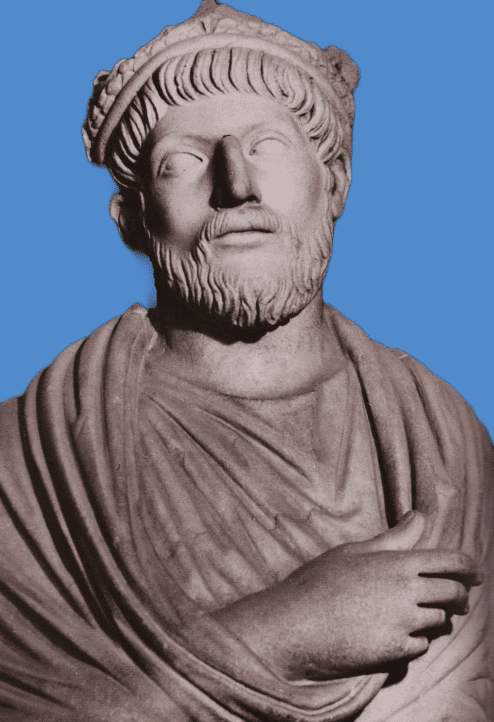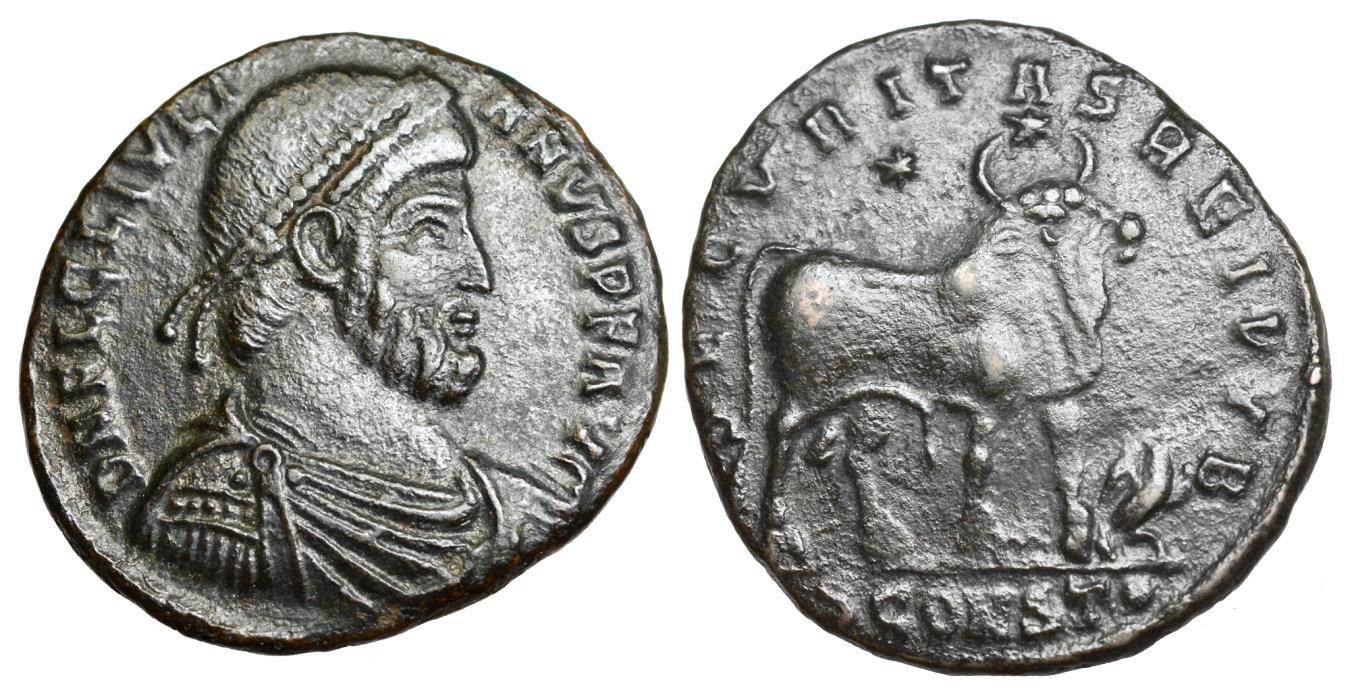| Predecessor | Constantius II |
| Successor | Jovianus |
| Born | 331, Constantinople |
| Died | 26 June 363 (aged 31–32), Samarra, Mesopotamia |
| Spouse | Helena |
| Children |
|
| Father | Julius Constantius |
| Mother | Basilina |
His Story
Biography of Emperor Julian II “The Apostate”
Julian II, also known as Julian the Apostate, was one of the most controversial and fascinating figures of ancient Roman history. He was born in Constantinople in 331 or 332 CE, as a nephew of Constantine the Great and a cousin of Constantius II, who ruled the Roman Empire from 337 to 361 CE. Julian grew up in a Christian household, but he secretly abandoned his faith at age 20 and embraced paganism, especially the Neoplatonic philosophy and theurgy, a form of magic that aimed to unite the human soul with the divine.
Julian became emperor in 361 CE, after the death of Constantius II, who had appointed him as Caesar (junior emperor) of the western provinces in 355 CE. Julian had proved himself as a capable military leader, defeating several barbarian invasions and restoring order and security to Gaul and Britain. However, he also had a strained relationship with Constantius II, who feared his popularity and ambition. In 360 CE, Julian’s troops proclaimed him as Augustus (senior emperor) in Paris, triggering a civil war that was cut short by Constantius II’s sudden death.
As emperor, Julian embarked on a radical religious and cultural reform, aiming to revive the traditional Roman paganism and to reverse the Christianization of the empire that had begun under Constantine the Great. He restored the temples and cults of the old gods, promoted religious tolerance for all faiths except Christianity, which he regarded as a superstition and a threat to the empire’s unity and stability. He also tried to revive the classical education and literature, patronizing pagan scholars and philosophers and writing several works himself on various topics, such as history, theology, rhetoric, satire, and poetry.
Julian’s pagan revival met with resistance and hostility from many Christians, especially the bishops and clergy, who saw him as an enemy of God and a persecutor of the church. Julian did not resort to violence or coercion against the Christians, but he used subtle and indirect methods to undermine their influence and privileges. For example, he banned Christians from teaching classical literature, arguing that they should not use the works of pagan authors that they despised. He also tried to sow division among the Christian sects by allowing the exiled bishops to return and resume their disputes. He also attempted to reform paganism itself, by creating a unified and organized priesthood, a common creed, and a set of moral precepts.
Julian’s reign was short-lived and turbulent. He faced several challenges and crises, such as rebellions, conspiracies, famines, plagues, and wars. In 363 CE, he launched a risky campaign against the Persian Empire, hoping to emulate the glory of Alexander the Great and to secure the eastern frontier. However, his campaign ended in disaster, as he was wounded by a spear during a skirmish near Ctesiphon, the Persian capital. He died on June 26 or 27, 363 CE, at the age of 31 or 32. His death marked the end of his pagan revival and the restoration of Christianity as the dominant religion of the empire.
Julian’s legacy is complex and controversial. He is admired by some as a philosopher-king, a champion of religious freedom, and a defender of classical culture. He is despised by others as an apostate, a tyrant, and a failure. He is also a source of inspiration and fascination for many writers and artists throughout history, who have portrayed him in various ways, depending on their own views and agendas.




